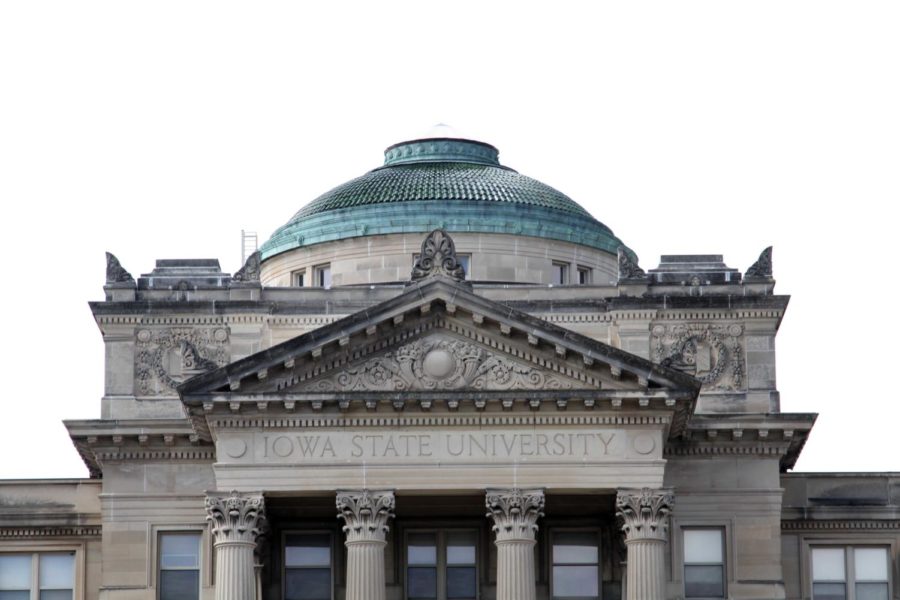Patents, titles bring money, new products to university
January 28, 2002
The computer, the fax machine, many soybean varieties, the method of making blue cheese and the process of DNA separation – all are products of Cyclone ingenuity developed at Iowa State.
Kenneth Kirkland, executive director of the ISU Research Foundation, said the variety of world-class research conducted at Iowa State allows the university to develop more than 100 inventions a year.
Iowa State currently holds the title to 355 active patents and ranks second behind the University of California System in License and Option Agreements Executed on Technologies.
“Last year, roughly, our royalty was $3 million,” Kirkland said. “That number is going to be quite a bit higher next year because of a large license agreement we’ve just done.”
Currently the Research Foundation is not releasing details about the license, but Kirkland said it will appear in the foundation’s annual report.
The ISU Research Foundation, which was founded in 1938, is the third oldest technology transfer group in the country.
Licenses versus patents
A license is a right Iowa State sells to commercialize and examine developed technology for a certain period of time, Kirkland said. Since it can take two to three years for a patent to be issued, the bulk of Iowa State’s technological developments are licensed before receiving a patent. This allows the university to put the technology on the market before someone else develops it or it becomes obsolete.
Lynn Mumm, University Research Foundation disclosure and database manager, said not all licensed technology, such as software and plant varieties, will receive a patent.
Likewise, not everything receiving a patent becomes licensed.
“A home run might make a lot of money, but that helps pay for the ones that are worth patenting but didn’t get commercialized or may be in the market but not showing a profit,” Mumm said.
At the end of the last financial year, the Research Foundation had 386 profitable agreements out of about 900 active licenses. Out of the 386, 320 – mostly plant varieties – brought in less than $5,000 a year.
Who gets what?
The Research Foundation co-owns the rights to any technology developed on campus, with the exception of undergraduate projects. If an undergraduate develops new technology, the student has the option to use the Research Foundation’s legal services and funds, but he or she is not under obligation, Mumm said. Research assistantships or graduate students, however, would have an obligation to disclose their developments.
“We have to give credit to the inventors. We work hard to get patents and licenses, but without the inventors, we would have nothing to do,” Mumm said. “We always try to keep that in perspective.”
The Research Foundation takes 15 percent of the gross profit of a license, Kirkland said.
After patent and legal costs are paid, the net royalty is divided equally among the inventor, the inventor’s college and the Research Foundation.
“We have to maintain a balance here to help us with our expenses,” Kirkland said. “Our budget is about $4 million, and we don’t get much from the university for operating expenses.”
Last fiscal year, the Research Foundation also returned $2.4 million to the university to fund research projects that need help to make them commercial. The money also helps support the vice-president of research and advanced studies office.
“Our mission is to get technology developed for the public,” Kirkland said. “Dollars are not the first thing we look at.”
Faxes and computers
In terms of financial return, Iowa State’s biggest patent was a method of transmitting digital data, which became commercialized as the fax machine.
Developed in 1971 by electrical engineering doctoral student David Nicholas, the patent has brought in $36 million, with the majority of revenue received between 1992 and 1994.
“We got a lot of money from litigation after the patent was expired because it was discovered that people were using the technology before it expired,” Kirkland said.
Despite the success of Nicholas’ development, the fax machine may have fallen second to the world’s first electronic digital computer developed at Iowa State in 1942 – but a patent was never issued.
“At that time, no one really understood the significance of what Dr. Atanasoff had done,” Mumm said. “There was a patent application filed, but at the time that was World War II, and Dr. Atanasoff went off to Washington to the Navy. Attempts were made, but there were not enough resources to follow through.”
It is impossible to know how much revenue was lost, but by the time the machine was developed into useful commercialized technology, the patent could have expired, Kirkland said.
The first computing machines were commercialized in the 1960s, which would have been the tail end of the patent.
“I suppose you could have had a Silicon Valley in Iowa,” Kirkland said. “What the patent would have attracted in terms of research and companies – that may be where the loss occurred.”
University benefit
Along with benefiting inventors, research conducted at Iowa State benefits the entire university as well.
“If developed technology is used in the marketplace, you can point out that it was invented at Iowa State,” Kirkland said. “Its very good publicity for the university and attracts faculty and staff showing we have an active research program.”
















